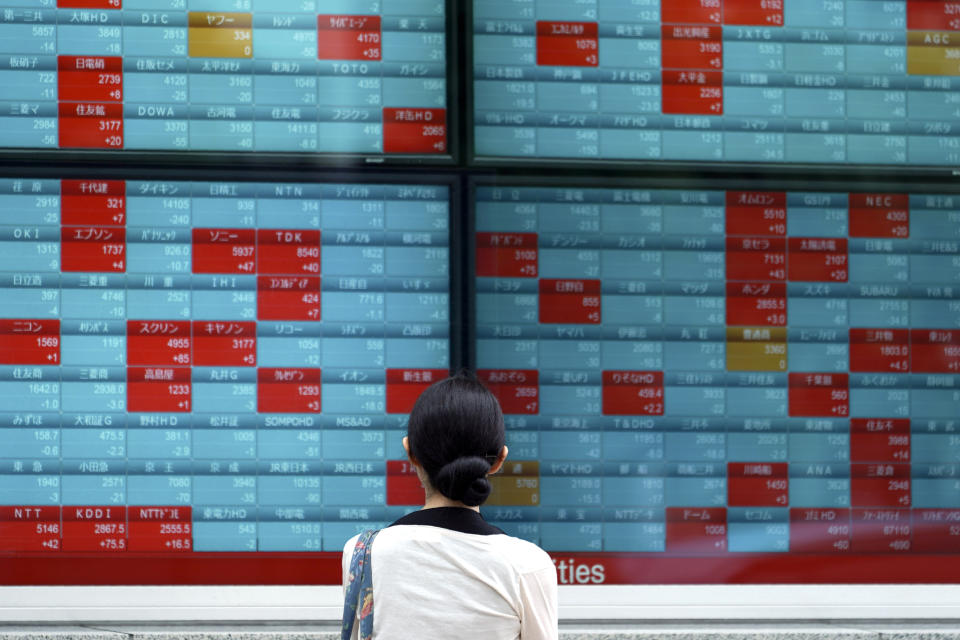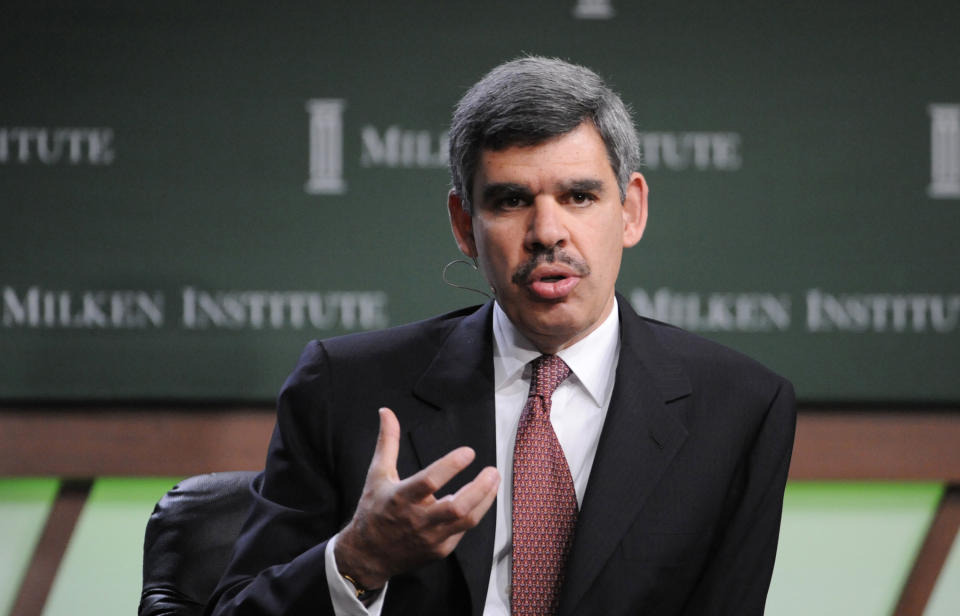Negative interest rates are coming and they are downright terrifying
What if I said I wanted to borrow $100 from you and pay you back $99 five years later? Would you do it?
Hell no!
And yet this is exactly what’s happening right now in the banking systems of Japan, Germany, France, and other European countries.
Negative interest rates — where the lender gets paid back less than they’ve loaned — now add up to 30%, (and counting), of the global tradable bond universe, according to JPMorgan (JPM). You may have seen for instance that Germany just sold the first negative yielding 30-year bond issue.
In case you’re wondering, yes, this is crazy.
“It’s really unusual and really distorting the global financial system,” says Torsten Slok, chief economist at Deutsche Bank Securities (DB). “I spend all my time talking about it.”
This is not going to end well
Negative rates are counterintuitive, unprecedented — and to my mind — mind-bendingly insane and downright scary. They are like a parallel universe where everything you’ve ever learned about finance and human behavior is turned upside down.

Worse, negative rates are being normalized by economists, bankers, and commentators.
Worst, I have a funny feeling this will end badly. Negative interest rates have all the hallmarks of serious trouble for the financial markets; an anomaly growing in scale which seemingly came out of nowhere that is under-recognized, poorly understood and dismissed as not consequential. (Flashing red lights here.)
In the U.S. we aren’t particularly aware of negative rates because they haven’t made their way to our shores ... perhaps yet.
Yes, the U.S. ten year Treasury yields 1.59%, not close to 0%, but negative rates seem to be creeping ever closer. For instance, negative interest rates haven’t come to U.S. corporate debt, but Euro-denominated bonds issued by the likes of blue-chips Apple (AAPL), McDonald’s (MCD), and Pepsi (PEP) carry negative yields.
And in Europe, it was postulated that negative rates would never fly in the consumer sphere in terms of banks paying back depositors less than they put in their savings accounts, but that’s now changing. Banks in Denmark and Switzerland are now charging customers to hold deposits. And on the flip side, and also in Denmark, mortgages with negative rates are available. That’s right, you get a mortgage from the bank, and the bank essentially pays you each month. A three-year adjustable rate mortgage priced at negative .28% there recently.
“Helt vildt,” as the Danes might say. Translation: “Totally nuts.”

‘I don’t think the U.S. can resist the pull’
None of this gives Timothy Duy, an economics professor at the University of Oregon, a warm and fuzzy feeling. “The issue right now is the rest of the world seems to be going deeper and deeper into negative interest rates, and I don’t think the U.S. can resist that pull,” he says.
By now, if you are like me, your head is swimming with questions:
-How, when, and why did negative rates come about?
-Are negative rates bad?
-How will this end?
Let’s tackle the first couple of questions first. It appears that negative interest rates are a modern phenomenon that was first implemented to spur sluggish economies that couldn’t get traction coming out of the Great Recession. (Yes, brought to you by central bankers.) Denmark’s Nationalbank, (the Danes again) in July 2012 was one of the first, followed by the European Central Bank in 2014, the Bank of Japan, and now much of the rest of Europe.

These negative rates were “paid” (or levied really) on banks’ deposits in central banks. The point was to penalize banks from keeping too much money in central banks and thereby encourage them to lend. Negative rates then spread to government bonds — especially in Europe — and to corporate bonds, as well. That’s because prices for these financial instruments (which move in the opposite direction of rates) went higher and higher as investors were willing to pay more and more for safe places to park their money. Rates turned negative on these bonds when investors were so anxious for safety they would even accept less than 100% of their investment back.
Paul Davies of the Wall Street Journal put it succinctly when he wrote: “It is a stark illustration of how ultra loose monetary policies have turned debt investing into a choice about how to lose the least amount of money.”
I know, it’s all whack.
Negative rates could ‘break things’ in the U.S.
Exactly how big is the negative rates universe now? According to Deutsche Bank’s Slok, there’s some $15 trillion of negative yielding bonds in the world (out of a total of some $115 trillion), up from zero five years ago. All German government bonds are negative yielding now. And if you exclude the U.S., some 45% of the worlds’ bonds have negative yields. So not chicken feed.

The same financial talking heads who say negative rates can’t come to the U.S. remind me of the people who said Boris Johnson would never be Prime Minister of the UK and Donald Trump would never be President. And speaking of President Trump, in case you haven’t noticed, he engendered a trade war and has been relentless in calling for lower rates, both of which have slowed global growth and pushed rates down. Mike Davis, an economics professor at the Cox School of Business at Southern Methodist University, notes that President Trump is “creating massive amounts of uncertainty in markets,” which he thinks has companies questioning whether they should make investments. Again, that puts downward pressure on rates.
Also keeping a lid on rates are aging populations that don’t spend, as in Japan, for instance. Plus a lack of investment by companies. In this post-industrial world, where expensive property is contracted out or in the case of internet giants, not needed at all, there is much less need for capital spending. The result is that many corporate giants have massive cash troves; such as Facebook (FB) with $48 billion, Berkshire Hathaway (BRK-A, BRK-B) with $112 billion and Apple with a staggering $245 billion.
What would happen if rates go negative in the U.S.? Who knows. Allianz Chief Economic Adviser Mohamed El-Erian, for one, says he would sound the alarm if treasury yields dip into negative territory. “If we do I’m going to be really worried because negative yields in the U.S., the world’s biggest financial market, will break things,” he told Yahoo Finance.
Gulp.

The serious negative effects of negative rates
So if negative rates were a policy tool put in place by bankers, how do we assess their work? Have negative rates been a success or a failure?
The answer is a bit complicated. You sure can’t argue that negative rates have greatly boosted the economies of Japan or Europe. (Maybe you could make the case that they would be in worse shape without negative rates, but that’s sheer speculation.)
On the other hand, I think it’s clear there are some pretty serious negatives, certainly from the standpoint of uncertainty. A recent note by JPMorgan lays out nine unintended consequences; including lower bank profitability, lower credit creation, paradoxically higher rates in some instances (banks need to make up for lower income), reduced liquidity and functionality of credit markets, increased deficits in pension funds, and even exacerbation of wealth and income inequality.
But wait, there’s more.
Bank of America Merrill Lynch (BAC) postulates that, “...if banks ever start passing negative rates onto retail depositors, the effect would be similar to inflation — cash today would be worth more than cash tomorrow. Consumers might respond by consuming more and saving less, boosting GDP growth in the short run. But this “substitution effect” could be offset by what economists call a negative “income effect”: expected erosion of savings could actually make households more conservative, pulling back on consumption both today and in the future.”
I would add to that an even bigger problem: The unknown and the uncertainty that comes with it.
Here’s Bank of America Merrill Lynch again: “Government yield curves and credit spread curves are losing their information content. In our opinion, the fact that the 3m10y or 2y10y UST spreads have inverted is less of a reflection of U.S. recession risks and more of a reflection of the desperation for yield by foreign investors flocking into USD denominated bonds as bond yields turned more negative in Europe and Japan.”
Translation: Trying to interpret the U.S. Treasury yield curve becomes meaningless.
So regardless if negative rates ever come to the U.S., there’s already an impact. Expect more to come.
What about that last question: How will this end? As you can tell, my take is, badly. But I’m not sure what form the ugliness will take or, more vexing, what we should do about it.
One thing is I think governments will have to turn away from monetary policy and rely more on fiscal policy, not just tax cuts, but government spending on much needed infrastructure to stimulate the economy and drive rates back up. Those cash rich companies may need to unlock their coffers, too.
But that may be after governments are forced into action in the wake of some sort of meltdown or crises. I hope not not. But I wouldn’t bet against it.
“At what point are interest rates so low, a financial system predicated on positive returns doesn’t work anymore?” asks Duy of the University of Oregon.
Good question. I sure hope we don’t find out.
Andy Serwer is editor-in-chief of Yahoo Finance. Follow him on Twitter: @serwer.
Read more:
Why life is better in places economists hate
Why big tech is the new Wall Street, Washington's whipping boy
Jamie Dimon: Donald Trump should 'walk away' if he can't get a good deal with China

 Yahoo Finance
Yahoo Finance 
